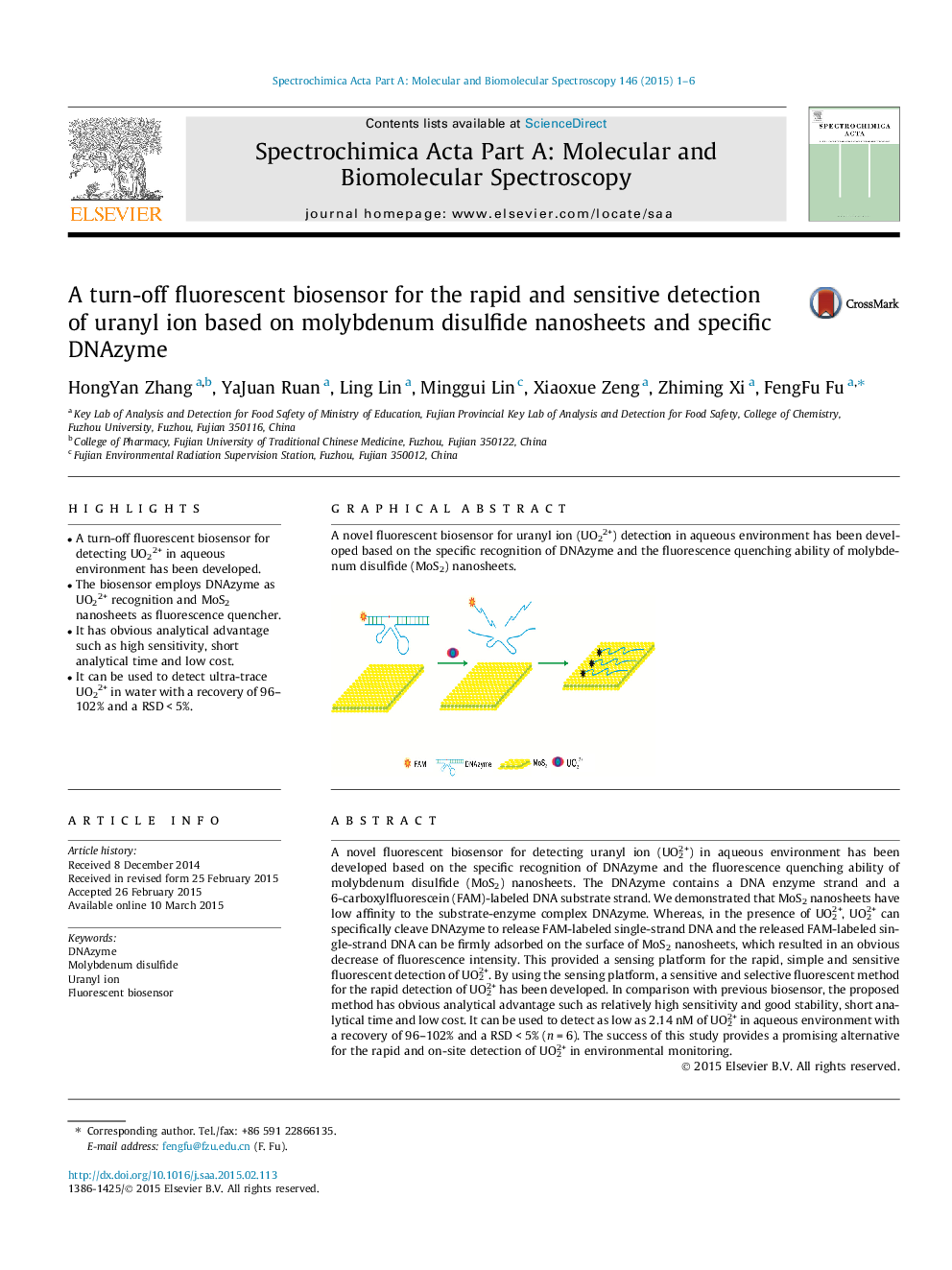| Article ID | Journal | Published Year | Pages | File Type |
|---|---|---|---|---|
| 1231894 | Spectrochimica Acta Part A: Molecular and Biomolecular Spectroscopy | 2015 | 6 Pages |
•A turn-off fluorescent biosensor for detecting UO22+ in aqueous environment has been developed.•The biosensor employs DNAzyme as UO22+ recognition and MoS2 nanosheets as fluorescence quencher.•It has obvious analytical advantage such as high sensitivity, short analytical time and low cost.•It can be used to detect ultra-trace UO22+ in water with a recovery of 96–102% and a RSD < 5%.
A novel fluorescent biosensor for detecting uranyl ion (UO22+) in aqueous environment has been developed based on the specific recognition of DNAzyme and the fluorescence quenching ability of molybdenum disulfide (MoS2) nanosheets. The DNAzyme contains a DNA enzyme strand and a 6-carboxylfluorescein (FAM)-labeled DNA substrate strand. We demonstrated that MoS2 nanosheets have low affinity to the substrate-enzyme complex DNAzyme. Whereas, in the presence of UO22+, UO22+ can specifically cleave DNAzyme to release FAM-labeled single-strand DNA and the released FAM-labeled single-strand DNA can be firmly adsorbed on the surface of MoS2 nanosheets, which resulted in an obvious decrease of fluorescence intensity. This provided a sensing platform for the rapid, simple and sensitive fluorescent detection of UO22+. By using the sensing platform, a sensitive and selective fluorescent method for the rapid detection of UO22+ has been developed. In comparison with previous biosensor, the proposed method has obvious analytical advantage such as relatively high sensitivity and good stability, short analytical time and low cost. It can be used to detect as low as 2.14 nM of UO22+ in aqueous environment with a recovery of 96–102% and a RSD < 5% (n = 6). The success of this study provides a promising alternative for the rapid and on-site detection of UO22+ in environmental monitoring.
Graphical abstractA novel fluorescent biosensor for uranyl ion (UO22+) detection in aqueous environment has been developed based on the specific recognition of DNAzyme and the fluorescence quenching ability of molybdenum disulfide (MoS2) nanosheets.Figure optionsDownload full-size imageDownload as PowerPoint slide
